Partly Truth And Partly Fiction: How Bloomberg Crowned The Wrong King Of Carmakers. And Why They Don't Teach Math At J-School

Someone asked yesterday: “And what exactly is the difference between journalism and blog anyway?” Let me tell you a story:
Last Wednesday, I walked down the shop floor of Nissan’s humungous factory in Smyrna, Tennessee. A monitor pronounced that Volkswagen would end the year as the world’s largest automaker. My stomach knotted.
Two days before, Bloomberg had made the same proclamation : “VW Likely to Overtake Toyota as Top Carmaker in 2011, GM to Remain Second.”
I immediately warned the world that this is nonsense. But it didn’t stop the story from going viral. After all, who are you going to believe, a blogger at TTAC, or the professional journalists at Bloomberg?
The following day, I received a surprising email from someone very high up the food chain at Bloomberg …
The big mistake
Bloomberg had written correctly that analysts of J.D. Power, IHS Automotive and PwC Autofacts see Volkswagen’s sales rise 13 percent, they estimate that sales of GM would gain about 8 percent, while Toyota’s sales should drop 9 percent. 10 months into the year, that’s an easy call.
Then, however, a serious mistake was made. The estimates were “used to calculate the average projections.” By Bloomberg. Bloomberg calculated Volkswagen’s year-end sales as 8.1 million, those of GM as 7.55 million, and those of Toyota at 7.27 million.
You need to know only one number to immediately notice the error: GM’s global sales in 2010 were 8.39 million. If you don’t know that number off the top of your head, you can google it. Add 8 percent growth, and you end up with more than 9 million. Even if you can’t figure a tip without a pocket calculator, it should be evident that 8.39 million plus 8 percent can’t possibly be 7.55 million.
Due diligence
But miracles happen. Allegedly. So as a precaution, I picked up the phone and called all three automakers. After making the requisite noises that they cannot comment on results before the results are in, all three told me that the Bloomberg story is bunk. A knowledgeable contact at GM assured me that I wouldn’t look stupid if I would guess that GM would end the year a little less than a million units ahead of the number 2 contender, Volkswagen.
Bloomberg could have done the same. They didn’t.
They blew the chance to google the right number. They blew the chance to pick up the phone. Instead, they picked the wrong number, or as my emailing contact at Bloomberg put it, “the estimators didn’t start from the 2010 base as reported.” The disaster was in the making.
What is really shocking is that the rest of the media did not notice the mistake either.
Going viral
Instead of landing on Snopes, the story went viral. Everybody, from Autoblog to the Zimbabwe Metro happily told its readers that Volkswagen will be the world’s biggest carmaker this year, half a million cars ahead of GM, and 800,000 units ahead of Toyota. Seasoned experts like Paul Eisenstein of the Detroit Bureau swallowed hook, line, and sinker “that sales will rise 13% this year for Volkswagen – which was the number-three maker for 2010 – to 8.1 million. General Motors will gain 8%, to reach 7.5 million. “
Formerly respected papers like the New York Times, the New York Daily News, The Guardian in the UK, the Chosun Ilbo in South Korea , and the Economic Times in India reprinted the admitted garbage. Solid business papers such as the Financial Times, even the world’s oldest car magazine, Autocar in London, fell for the numerical nonsense. Other wire services like Agence France Presse picked up the gobbledygook. Even Automotive News [sub], who really should know better, stepped into Bloomberg’s trap.
Untold numbers of blogs duplicated the drivel.
It is only a matter of minutes until Wikipedia will crown Volkswagen the world’s largest automaker. After all, the threshold for inclusion in Wikipedia is “verifiability, not truth.” And we now have hundreds of reliable sources with the requisite editorial oversight. Or not.
That oversight failed worldwide, except at The Toronto Star. It printed the story, but wisely hedged its bets by commenting that “meanwhile, contrasting analysis at TheTruthAboutCars.com has GM finishing on top for 2011, with VW in second and Toyota in third.”
Twice burned, not shy at all
Seasoned auto and business writers should have been more careful, because they had been burned before. In November 2009, IHS Global Insight, using math bordering on lunacy, crowned Volkswagen as the world’s largest automaker to wide echo in the media. A month later, Volkswagen ended the year in place 3, around 1.2 million behind number one Toyota. IHS, which should have been relegated to counting the moose population of Nome, AK, was one of the experts queried by Bloomberg for this humdinger. To be fair, this time, the error was not that of IHS.
While I scoured the web for someone who has the guts to concede that 8 percent added to 8.39 million can’t possibly be 7.55 million (I finally found a lone voice,) my contact at Bloomberg tried to track down where the error was. Could the Wuling minivans be missing? Could either Daihatsu, or Hino, or both have been ignored at Toyota? After crunching the data looking for faulty logic, my newfound Bloomberg buddy gave up: “I can’t get the number to match exactly.” And he came to the conclusion:
“This looks like a garbage in, garbage out story.”
The B&B chime in
What personally made me sad was that most of our Best & Brightest who did comment on the initial story were likewise duped. They just could not believe that a reputable wire service like Bloomberg can make a simple, but glaring mistake. A lot of the comments were about Bloomberg using sales and silly me using production numbers. Well, first of all, the number to use is production (more on that below.) And second, it does not matter. Whether you use sales or production numbers as a base, in this case, the ranking remains the same.
SalesProductionProj GrowthProj SalesProj Prod.RankGMWhether you use the production numbers reported to OICA (hyperlinked), or the sales numbers announced in the official financial reports (hyperlinked in the table above), you will end up with GM a little less than a million ahead of second placed Volkswagen. The actual numbers don’t really matter at this stage of the game. This is a simple 1,2,3 ranking, and no baseball stats.
Congratulations to commenter KitaIkki: He came to the same conclusions as the Bloomberg honcho: “Garbage in, garbage out.”
Car Stats 101
Following recent incidents, here is, for all business and motor journalists, a little primer on car counting. The small lecture on the use and abuse of auto industry statistics has been given before, but some may have skipped class.
The number that decides the final ranking is the number reported to OICA, the umbrella organization of the worlds automobile manufacturer organizations. Whether you agree with the methodology of OICA or not, use their rules. OICA crowns the king of the hill, you don’t. Esteemed members of the media, dear colleagues of the future telling profession: If you want to predict the future king, then you want to replicate exactly how the king is chosen.
- The reported number is production, not sales. Why? Because only production is halfway comparable around the world. “Sales” is a term of high elasticity and subject to intense interpretation. If Toyota Japan sells a car to Toyota Motor Sales in the U.S.A., then this can be recognized as a sale. On the other end of the spectrum are hard registrations as reported by governmental agencies. Counting units produced is hard enough. There are CKD units floating around the globe. And it is not unusual that there are big differences between the year-end production number and the number reported to OICA for their table that is issued by the middle of the year. Despite the inevitable surprises, always use production numbers.
- The reported number is on the group level, not by brand. A Toyota for instance includes Daihatsu and Hino. Who is part of the group and who is not is decided by the whims of the group’s rulers. Porsche is not counted as part of Volkswagen – never mind that Porsche owns half of Volkswagen and v.v. If Suzuki and Volkswagen would be counted as one, then the whole largest automaker business would be settled for good. But they aren’t counted as one, never mind that Volkswagen thinks of Suzuki as an associate. Hyundai and Kia are reported as one, despite the fact that Hyundai has fewer shares in Kia than when they were counted separate. Even if Renault and Nissan send out the occasional joint press release, Nissan and Renault are not reported as a group to OICA. Go figure. Attempts on logic will fail. Leave it to the people who run the group. Use what each group uses. It is what it is.
- The reported number includes all automobiles from cars to heavy trucks and buses, but no motorcycles. Attempts on arriving at a light vehicle count outside of the U.S. and Canada will end in utter disaster. Don’t do it. Careful: J.D. Power often calculates light vehicle numbers outside of the U.S. Mistaking passenger vehicles for the total is a common mistake. ( I am looking at you, Associated Press.) Make that mistake in the U.S., and you suddenly end up with 2.7 million units instead of 7.8 million produced. Nobody would do that in the U.S. – but they do it all the time elsewhere. Japan reports regular vehicles and minivehicles separately. Wade into that morass at your own peril. Instead, stick with the total of all automobiles, and you won’t go wrong. Don’t even bother taking out heavy trucks and buses. They amount to less than 6 percent of the world total, and nobody knows for sure where a minivan ends and a bus starts. Use total automobiles.
- And finally, joint ventures. All cars made by a joint venture are usually recognized as made by the joint venture partner that provides the brand. This may make sense for a Buick or Chevrolet made in China. But why a Wuling? Because GM has a contract that allows GM to count all Wulings as GM’s. This is a matter of intense debate and controversy. You can and should disagree with it, but you should never adjust the numbers. Use the published number, as whacko as it may be.
Any deviation from the above, as sensible as it may be, is the beginning of a debacle. Once you start adjusting the numbers, your base is way off, and you’ll have the dreaded garbage in, garbage out situation that led Bloomberg and the world media astray.
And now for my favorite argument: “Numbers don’t matter!” Sure, everybody (except Volkswagen) says that officially. Sure, officially at the Olympics, it’s the taking part that counts. Both baloney.
Aftermath
Bloomberg killed all mentions of the erroneous story. Easier said than done: The story remains immortalized in the Google cache, and in thousands of Google hits around the universe. These days, when stories race around the globe at the speed of light, and remain accessible for eons without a library card, they should be written with more care and responsibility than ever. Instead, the fact checkers we used to have when I was a cub reporter appear to be among the many unemployed.
And where is the difference between a blogger and a journalist? Frankly, I have no idea. Kris Kristofferson has a song that describes both.

Bertel Schmitt comes back to journalism after taking a 35 year break in advertising and marketing. He ran and owned advertising agencies in Duesseldorf, Germany, and New York City. Volkswagen A.G. was Bertel's most important corporate account. Schmitt's advertising and marketing career touched many corners of the industry with a special focus on automotive products and services. Since 2004, he lives in Japan and China with his wife <a href="http://www.tomokoandbertel.com"> Tomoko </a>. Bertel Schmitt is a founding board member of the <a href="http://www.offshoresuperseries.com"> Offshore Super Series </a>, an American offshore powerboat racing organization. He is co-owner of the racing team Typhoon.
More by Bertel Schmitt
Latest Car Reviews
Read moreLatest Product Reviews
Read moreRecent Comments
- CanadaCraig As an aside... you are so incredibly vulnerable as you're sitting there WAITING for you EV to charge. It freaks me out.
- Wjtinfwb My local Ford dealer would be better served if the entire facility was AI. At least AI won't be openly hostile and confrontational to your basic requests when making or servicing you 50k plus investment and maybe would return a phone call or two.
- Ras815 Tesla is going to make for one of those fantastic corporate case studies someday. They had it all, and all it took was an increasingly erratic CEO empowered to make a few terrible, unchallenged ideas to wreck it.
- Dave Holzman Golden2husky remember you from well over decade ago in these comments. If I wanted to have a screen name that reflected my canine companionship, I'd be BorderCollie as of about five years go. Life is definitely better with dogs.
- Dave Holzman You're right about that!





















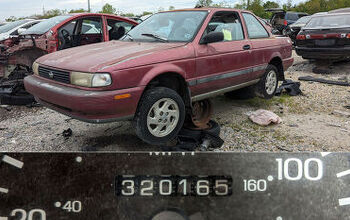





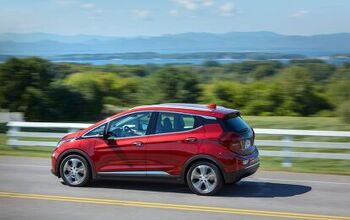
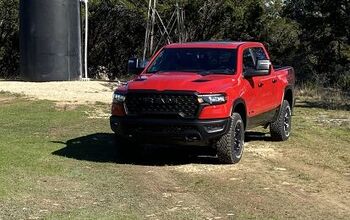

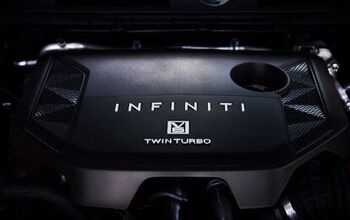
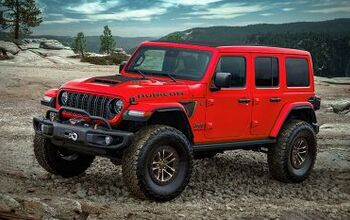
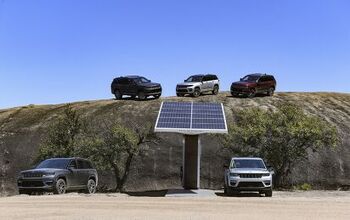
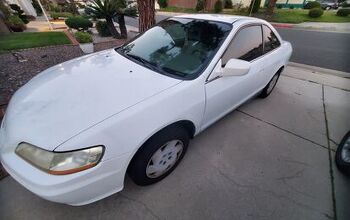

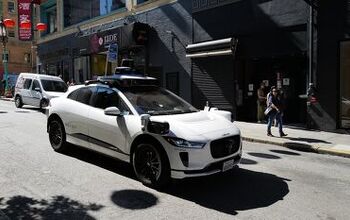
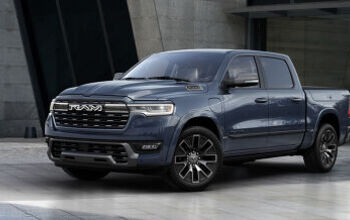
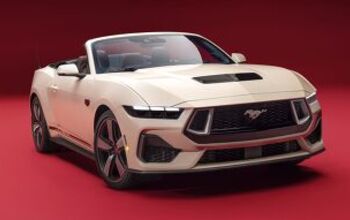

Comments
Join the conversation
I know little about most of the topics covered in the news media. Where I do have some competence, I often find errors, some of them as egregious as this one. Makes we wonder how much they screw up that I'm not smart enough to see.
Numbers doesn't matter. I would very much prefer a Porsche 911 over a GM WuLing.